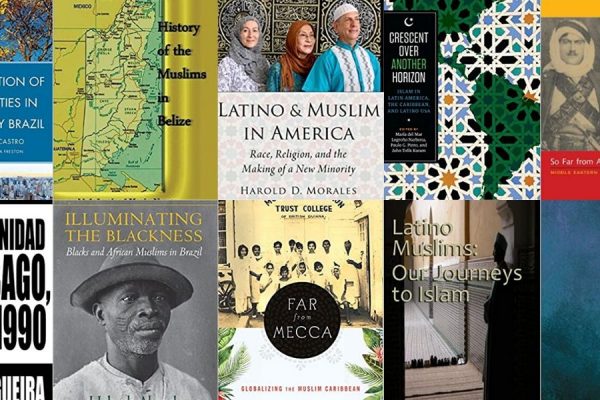We spent a lot of time on our core characters; taking inspiration from the beauty and richness of Islamic heritage, while researching language, customs, names, dress, and more to ensure that they are culturally appropriate. And as we sketched and wrote these characters we sought to instil in each of them different elements of Islam’s beauty – a shared essence that is experienced and expressed in different ways depending on each character’s unique background, skill, or passion.
We spent a lot of time on our core characters; taking inspiration from the beauty and richness of Islamic heritage, while researching language, customs, names, dress, and more to ensure that they are culturally appropriate. And as we sketched and wrote these characters we sought to instil in each of them different elements of Islam’s beauty – a shared essence that is experienced and expressed in different ways depending on each character’s unique background, skill, or passion.
After many months of working behind the scenes, my team and I are excited to finally be sharing Tales of Khayaal with the world.
Our creative concept is the result of many long hours discussing, deliberating, and designing our characters and their world, and the first step in what we hope will be a promising future, insha’Allah.
Rewinding to 2020, our first foray into the world of Khayaal started after reflecting on the overwhelming amount of digital content and distraction that we’re faced with today. Muslims around the world consume so much media, entertainment, and content, yet very little of it really encourages us to think directly about spirituality – let alone Islamic concepts.
Perhaps that is changing, and we have popular series such as Ertugrul and content like Omar and Hanna, for example, but we felt there were large gaps for quality Islam-inspired digital media such as video games, interactive comics, and animated series.
A large part of this initial thinking was focused on offering better, more diverse representation for young Muslims – with stories that are intentionally more mature and thematically sophisticated than children’s media. Stories that teenagers and young adults could see themselves in, be inspired by, and invite them to think about faith and spirituality from different perspectives in our increasingly digital future.
Around the time that my team and I started to explore possible ideas to explore this creative potential, I was spending more time with my dear teacher Dr Samir Mahmoud, of Cambridge Muslim Colledge. He has been a generous guide throughout this process, and some years earlier explained to me the deep Islamic spiritual concept of Khayaal.
Loosely translated as ‘spiritual imagination’, Dr Samir explained that Khayaal can be described as “the capacity of the heart to give forms to spiritual realities that don’t have any form, and to spiritualise material realities that do have form”.
And the more we talked about this beautiful concept and its meanings, the more I could see it as a rich source of inspiration for a series of stories that would allow us to explore this spiritual imagination, and help us think about the future as Muslims – navigating and practising our faith in an increasingly digital world.
So we set out with the intention of developing an experience for young Muslims that would open up these themes, ideas, and questions in an engaging, interesting, and sensitive way.
Developing our characters and their world
The development of Khayaal itself has been a huge effort from our global team, each of whom has contributed their ideas and skills through countless brainstorming sessions and strategy meetings, as well as long hours of research, sketching, storyboarding, and much more – with a few resets and start-overs along the way.
We spent a lot of time on our core characters; taking inspiration from the beauty and richness of Islamic heritage, while researching language, customs, names, dress, and more to ensure that they are culturally appropriate. And as we sketched and wrote these characters we sought to instil in each of them different elements of Islam’s beauty – a shared essence that is experienced and expressed in different ways depending on each character’s unique background, skill, or passion.
It was through this ‘uniqueness’ that we could introduce Khayaal – conceiving it as a realm of spiritual imagination where each character could find their true purpose, understand their gifts, and search for important truths. Our writing team worked closely with our illustrators to design what this realm might look and feel like, and how the characters might enter it.
We also considered what obstacles our characters might need to overcome on both their individual and collective journeys – spiritually, socially, and emotionally. And with the trajectory of technology and the digital world as it is, we wanted to explore what these challenges could look like in the not-too-distant future.
We eventually decided to set the stories 50 years in the future – close enough to be within some of our lifetimes, but far away enough for potentially seismic socio-economic changes to have taken place. By taking some of the developments, conversations, and issues of today and extrapolating them, we could build a world that felt futuristic and believable at the same time.
As we devised and iterated our characters and their world, we took regular advice, guidance, and encouragement from friends and advisors at global media companies working with big entertainment brands, as well as highly-regarded spiritual teachers and authors. We wanted to get this right and build it from the ground up as an authentic and engaging brand to represent us, our stories, and our hopes for the future.
Personally, I had to be mindful of not trivialising the deep and authentic sources and teachings of Islamic spirituality that is central to my life. We needed a creative safe zone that drew inspiration from the concept of Khayaal but in a fictional state of ‘Kha’. With the support and guidance of knowledgeable friends and teachers – and now the support of our generous donors on LaunchGood – I believe we have a strong foundation for the concept, insha’Allah.
What comes next?
When we first started to discuss Khayaal and its potential, the long-term vision became clear, including the possible development of an animated series, and video games. We have in fact built several working basic game prototypes in Unreal Engine over the past year.
However the game project is incredibly ambitious, and we decided our first step is to introduce the concept, characters, and world-building through online comics to gauge the reaction and response. We’re looking forward to seeing how the comics are received, and taking the project forward from there.
We’d also love to see people taking inspiration from the comics by imagining the future and the kinds of technologies that may appear, as well as thinking about the role of faith and spirituality within those scenarios. These conversations are vitally important – even more so with the advent of the much-hyped Metaverse – and I truly believe that Muslims around the world should be at the forefront of these discussions, debates, and explorations.
We welcome you to explore Tales of Khayaal with us, and join the community of supporters navigating this potential together.
To learn more about the campaign around the Tales of Khayaal, click here!





